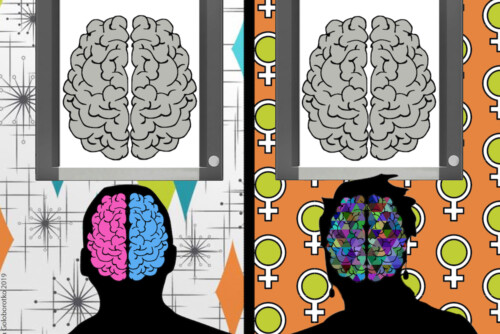While there is much debate about precisely how to engage with self-measuring entities or with entities as media, the recent debate about ontology across speculative realism and process philosophies would nonetheless seem to meet a shift in thought about subject formation and ideological interpellation away from their operation in disciplinary societies toward thinking about populations that are not reducible to subjects and, as such, are better fitting the biopolitics of control societies. 1 As Tiziana Terranova has argued, the population of control societies is not “a collection of subjects of right—constituted by the partial alienation of their natural rights to the sovereign—but a dynamic quasi-subject constituted by a great number of variables” pertaining to the environmental (or resonating) milieu of which it is a part. The population is not a collection of subjects, each to be controlled, because the population only reveals “probabilistic regularities once considered at the mass level.” 2 While for Terranova, it is probability that brings regularity and control; I would argue that it is the development of the quantitative processes that Parisi points to that will be at issue in politics where modulation and mutation are operative in relations of power, both in terms of capital and governance. It is the open processes of computation that are becoming resources for culture, politics, and economy.
And if, under conditions of control beyond probability, the centrality of subject positions in the construction of meaning are further undermined, opinion will nonetheless displace meaning and circulate in ways befitting an affective economy of labor and life. Terranova, following Foucault, points to what he has called “publics,” where “publics are addresses of communicated affective states,” rather than subjects of discourse about and argumentation over narrative knowledge with truth claims. 3 For Terranova, then, publics are engaged at the level of affect and sensation, being drawn into images and commentary that are full of passions and prejudices in order that affective states might take on a facticity without imploring a logic of evidence. Constituted on the same ontological plane as populations, publics are a matter of vitalizing information. They come and go in time and as such, they “express a mobility of the socius that further deterritorializes the relation between individuals and collectivities.” 4 Terranova argues that there is no relationship of belonging-ness that characterizes the individual elements that constitute publics. Arguing instead that belonging-ness or relationality is itself an effect of the mediated modulation of affect, Terranova concludes that digitized technologies have been fundamental to the deterritorialization of the relationship between individual and collectivity, or the constitution of what she refers to as publics. These technologies are able not only to bring all sorts of populations to calculation, but they are also able to produce publics through the provisional capture and dissemination of affect. 5
While biopolitics is a matter of distributing affective capacities unevenly across populations—usually with dire effects involving racial, gender, and other social differences—these distributions, however, are volatile. Since affective capacities are vectors of potential or capacity (perhaps becoming even more open or multitudinous as new quantitative processes become operative), the distribution of affect reshapes sociality, changes its character, and requires different approaches to ideological analysis other than or along with the effort to restore discursive argumentation over narrative and its truth claims. What is needed is an analysis of ideology in terms of what Amit Rai has called “ecologies of sensation.” 6 Drawing on a more recent study of the effects of the expansion of cell phone use in India on women, Rai points to ecologies of sensation as media assemblages with emergent properties that impel new tendencies, new forms of attention, intention, distraction, habit, and practice. 7 Bodies—human bodies—are part of these ecologies; but for Rai, it is the intensive qualities of bodies without names or identities that are central to present-day media assemblages. This is because unlike the racialized or gendered bodies that already are extended and named, the intensive qualities of bodies (human and nonhuman) are a matter of potentiality, of sensation or affective capacity. From this perspective, what might be easily overdetermined as identity and difference is less the focus than what is yet emergent and is only activated in a specific ecology for as long as it remains.
Timing becomes central to a politics of intervention as a matter of entering in the middle in order to modulate. A similar method for criticism is required, one which Rai describes as a “counter-actualization,” using Deleuze’s term. This means moving down from the extended, back to the intensive or potentiality. This is not merely a deconstructive practice but an ontologically oriented one, a performative intervention bringing a change of speed, rhythm, and vibration—experimenting with duration, sensation, resonance, and affect. Goodman calls it a “politics of vibration.” But a politics of measure might do as well. Here again, the politics and aesthetics are speculative realist ones in that there is an incitement to develop practices of speculation about encountering the realities of entities that are constituted through other-than-human perception, cognition, or consciousness; against a horizon of a world-without-us.
If I am suggesting that a theory of media needs to recognize the syncopation between our ability to render and deploy the ontological and epistemological implications of media technological developments, such that there is an aporia between matters of being and existence on one hand, and knowing and representation on the other; I am also suggesting that we extend our critical engagement with social difference in terms of identity, identification, knowing, and representation among human subjects to a critical engagement with the manipulation of affect and the distribution of capacities differentially across populations, across all scales of matter/energy—a matter of critically engaging measure. It is in this sense that I would argue that while ethnographies or case studies that show the interimplication of social difference with the developments of media technology and media theory are essential to our critical understanding of politics, culture, economy, and governance, an additional focus on affect and ecologies of sensation is necessary. With the additional focus on affect and ecologies of sensation, the importance of these case studies will be recast as one element of an assemblage, giving criticism specificity and width. We will also have to come back from identity and difference—which these case studies and ethnographies most likely will elaborate—back (down) to sensation and affect. In this we will participate in changing the meanings assumed in discourses of social difference. We will take (or take up) an experimental attitude to social difference; both multiplying its expressions wildly in order to differ from binarisms, as well as opening up every calculation that has violently reduced or is reducing multiplicities in the constitution of extensive bodies of race, gender, class, ethnicity, and nation. While critical theorists have been concerned with affect, resonances, and rhythm, we now have to elaborate a methodology for studying these in relation to a politics of measure and media technologies.
- All too simply put, one aspect of this debate concerns whether everything is related and therefore each entity could measure other entities, or whether there is indirect causality where entities lure each other into relations but are neither irreducible to those relations nor constituted by them—even though no entity is not made up of all its relations.[↑]
- Tiziana Terranova, “Futurepublic: On Information Warfare, Bio-racism and Hegemony as Noopolitics,” Theory, Culture & Society 24.3 (2007): 136-137.[↑]
- Terranova 135.[↑]
- Terranova 139.[↑]
- It should be noted that in keeping with an ahumanist approach, the populations are not merely human populations but all kinds—populations of cells, programs etc.[↑]
- Amit Rai, Untimely Bollywood: Globalization and India’s New Media Assemblage (Durham: Duke UP, 2009).[↑]
- Amit Rai, “Race Racing: Four Theses on Race and Intensity,” Women Studies Quarterly, forthcoming.[↑]



